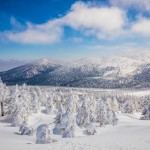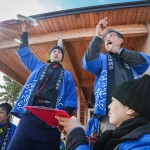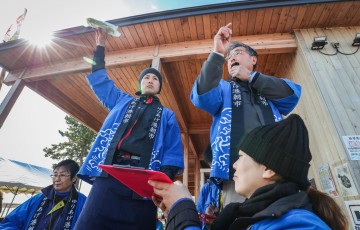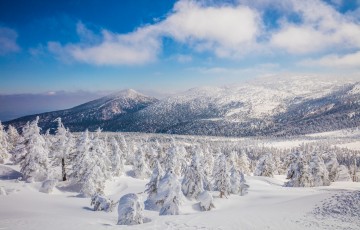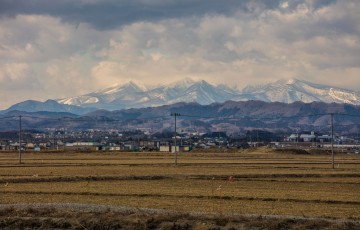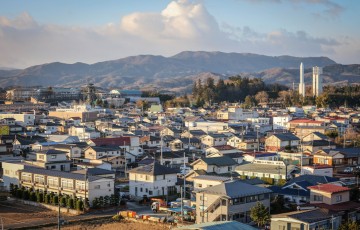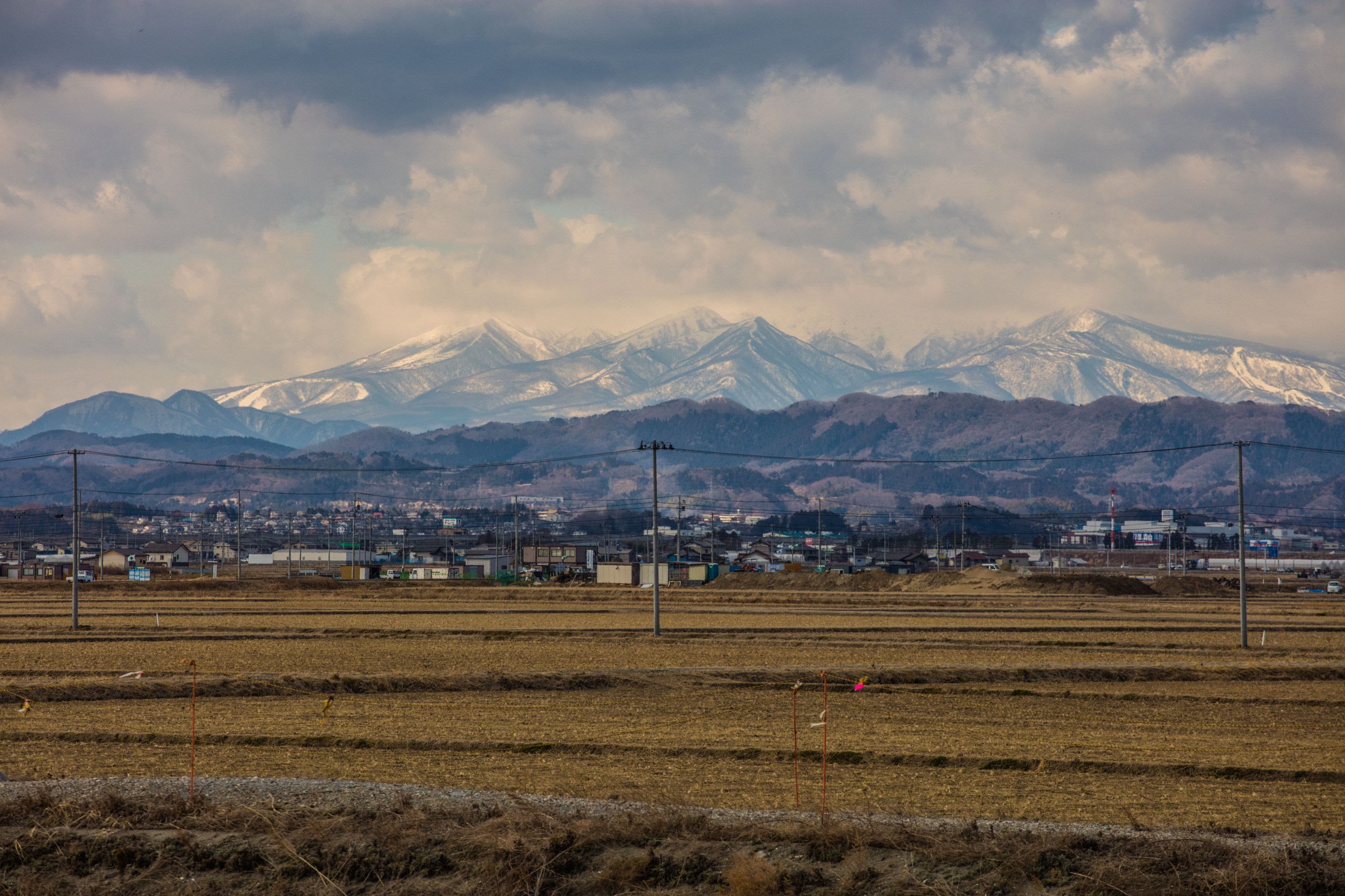
The weather of Natori city is a lot like my hometown – it is humid and cold in winter, but very comfortable if there is sun. Driving around the city itself was relaxing, I enjoyed the distanced view of the city.
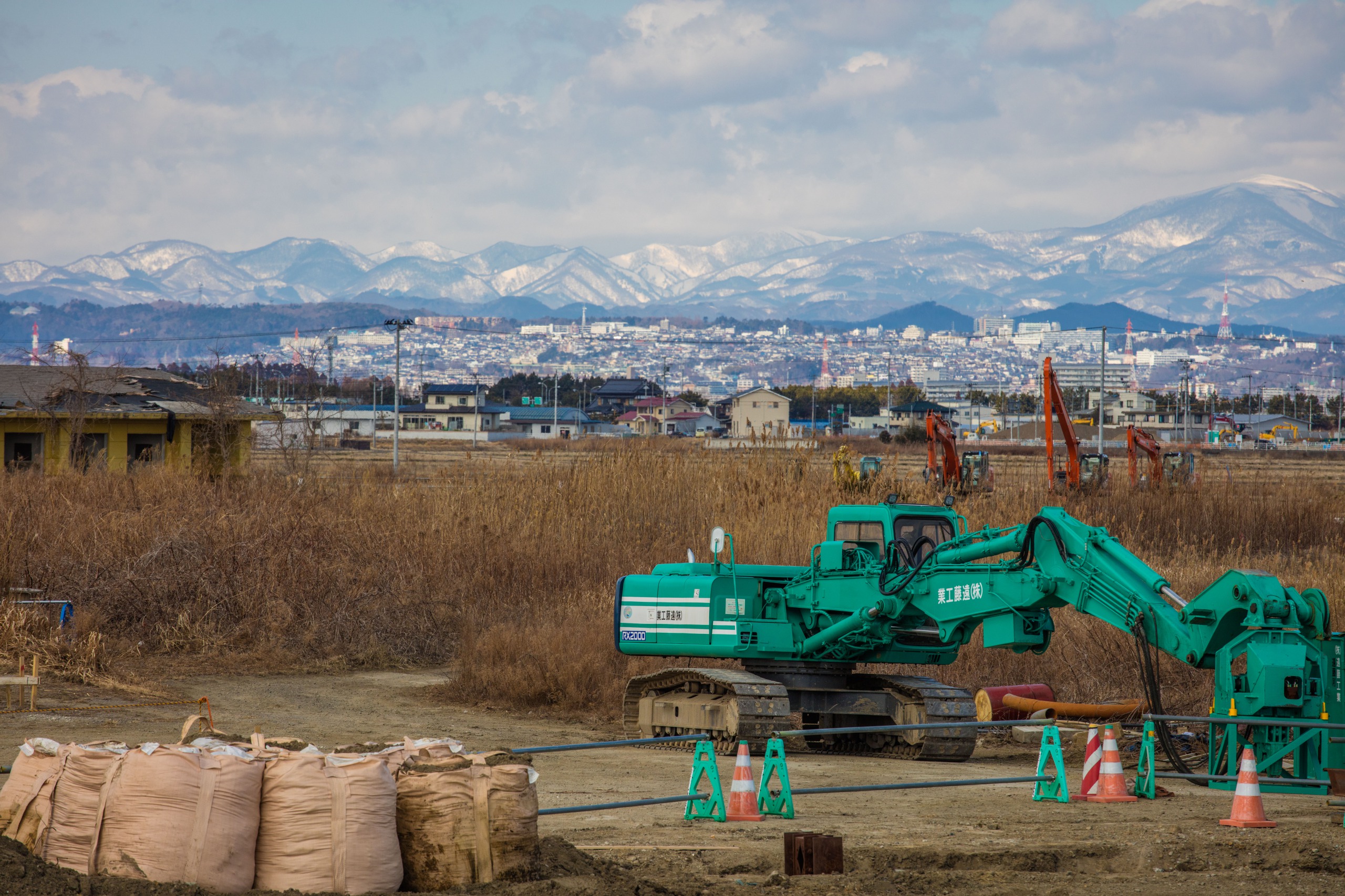
Construction site means the city is expanding itself, I wondered what Natori would look like after 10 to 15 years.
高橋さん農家-The Secret Behind the Luxury Seri
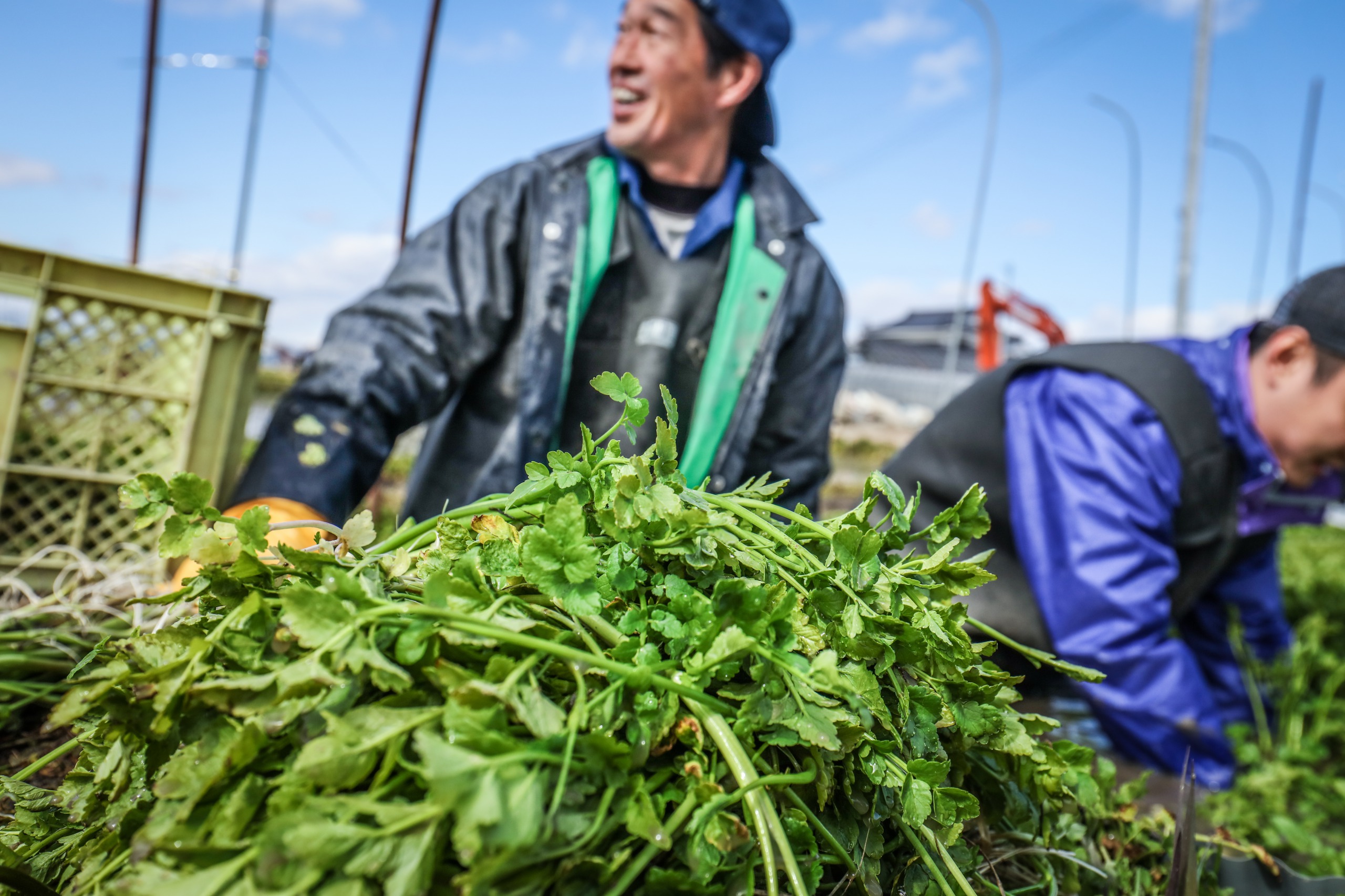
Seri (セリ) is a kind of expensive vegetable from Japan, and more than 70% of Seri comes from the Tohoku area. I was a big fan of Seri long before this trip – Seri was similar to the Chinese parsley (also known as the coriander), but more delicious.
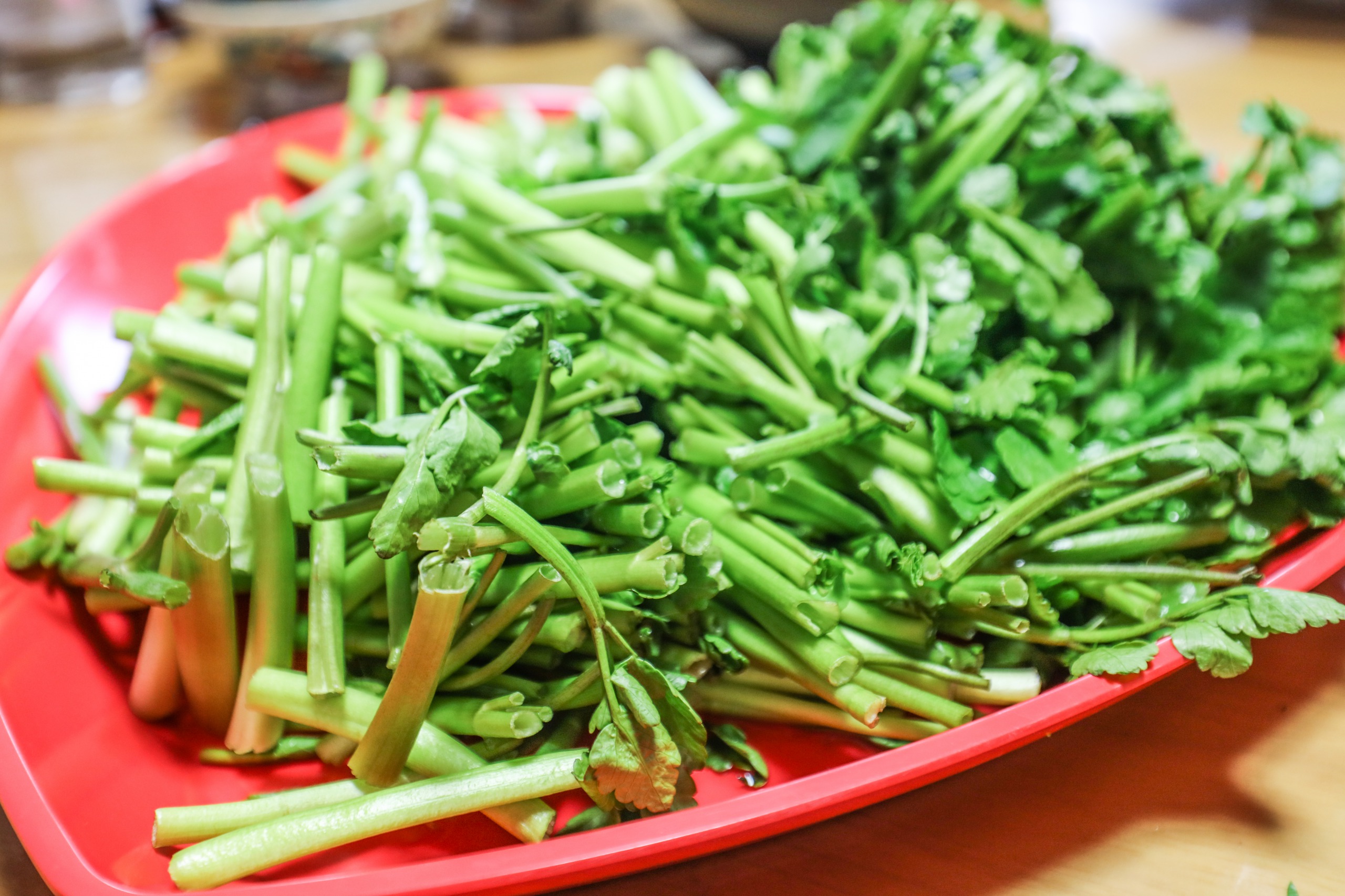
In Japan, the Seri used to be only served in important holidays like the Christmas or New Year; but as its popularity continues to grow, Seri was sold and consumed in Japan all year long.
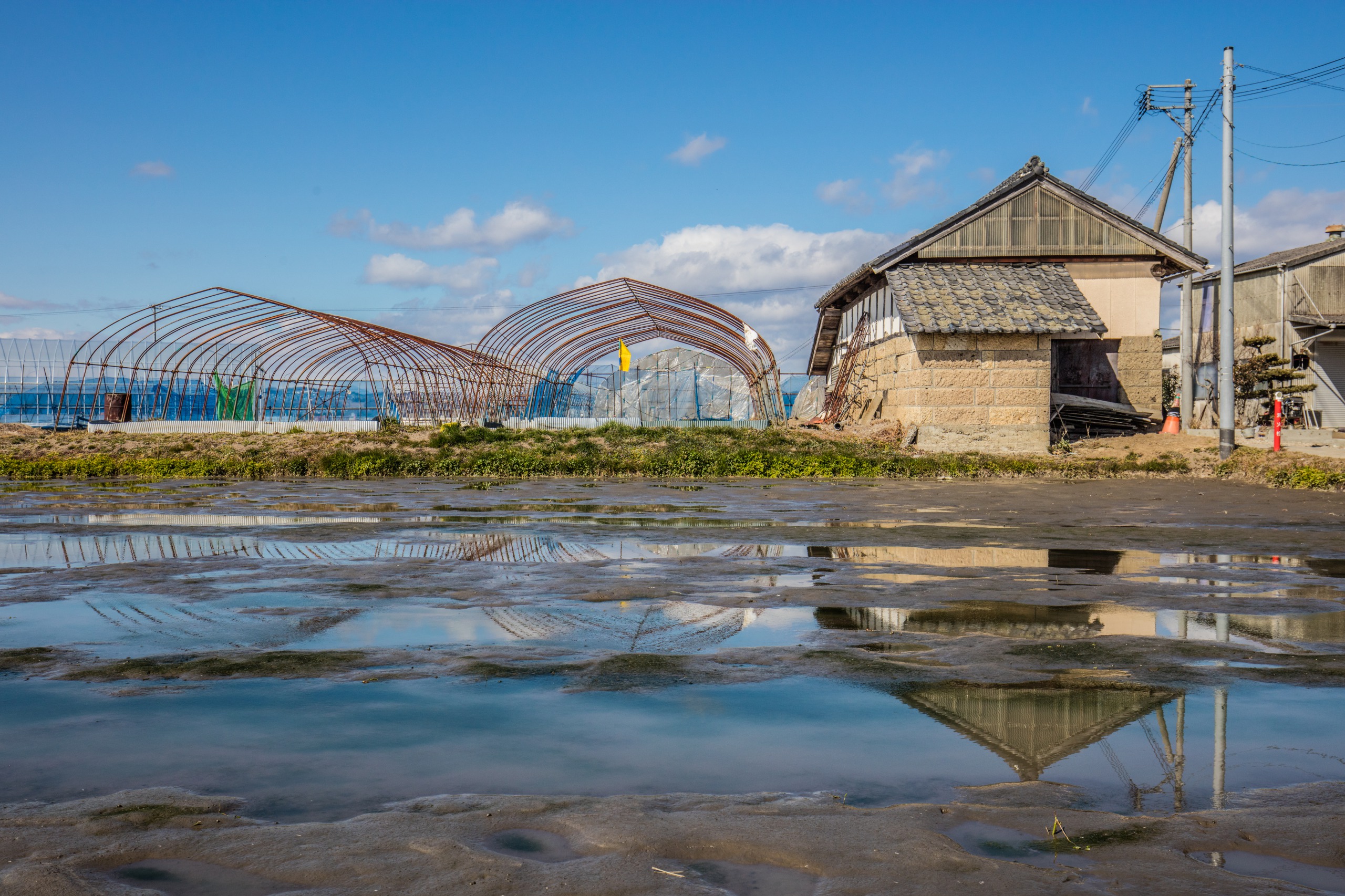
Today I had the opportunity to experience how Seri were harvested and sorted before sale at Takahashi’s Farm (高橋さん農家).
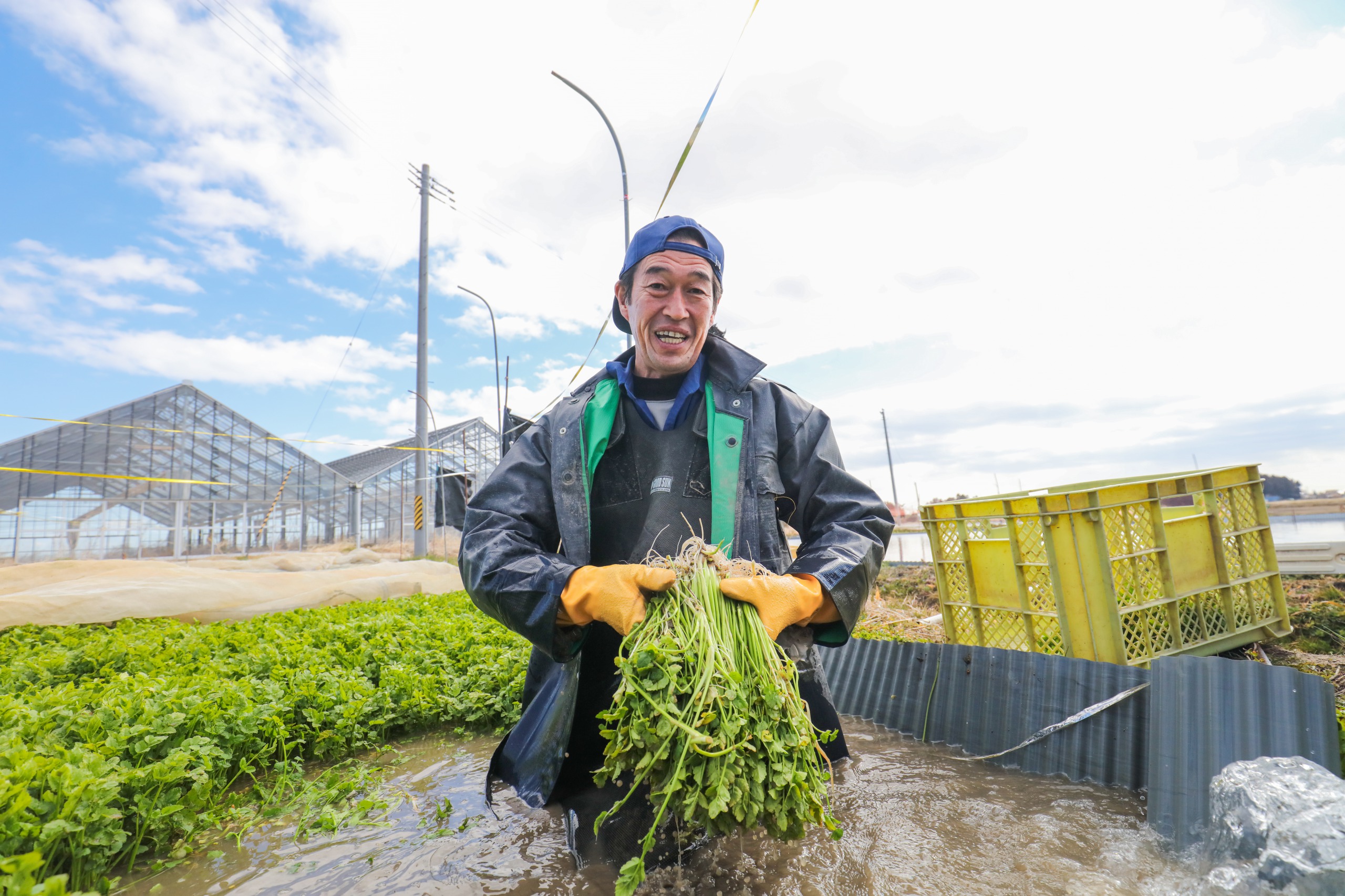
Mr. Takahashi used to be a fire fighter before retirement, and he has planted the Seri for more than 10 years. The reason for the Seri to be so expensive is because of the process the Seri has to go through before selling in the market.
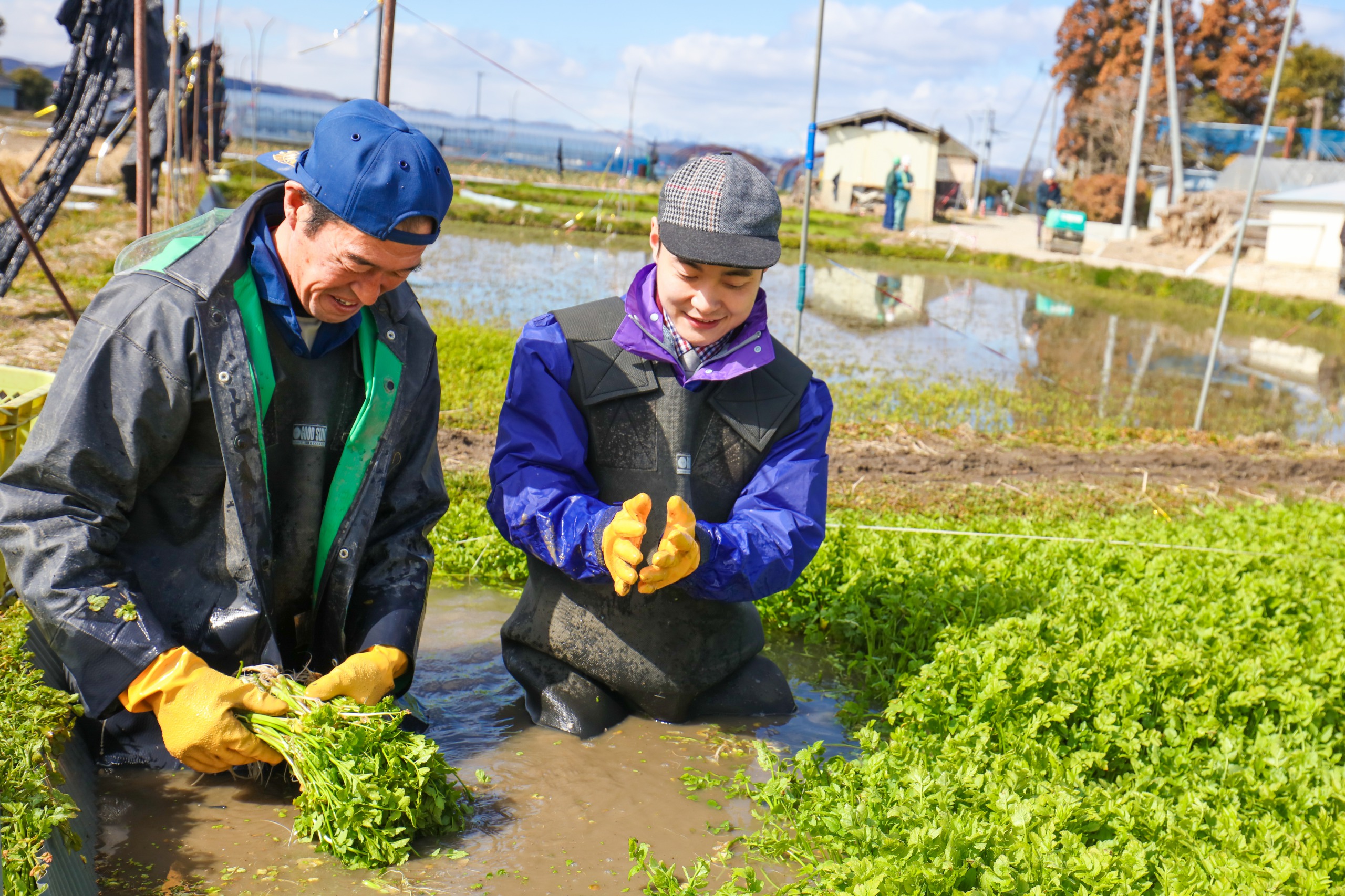
The first process is to harvest it. The Seri was grown in the field for approximately 8 months, and it takes a lot of human power to harvest it. One has to immerse half of his body in the mud and water, and kneed for a whole day just to get the Seri from the soil.
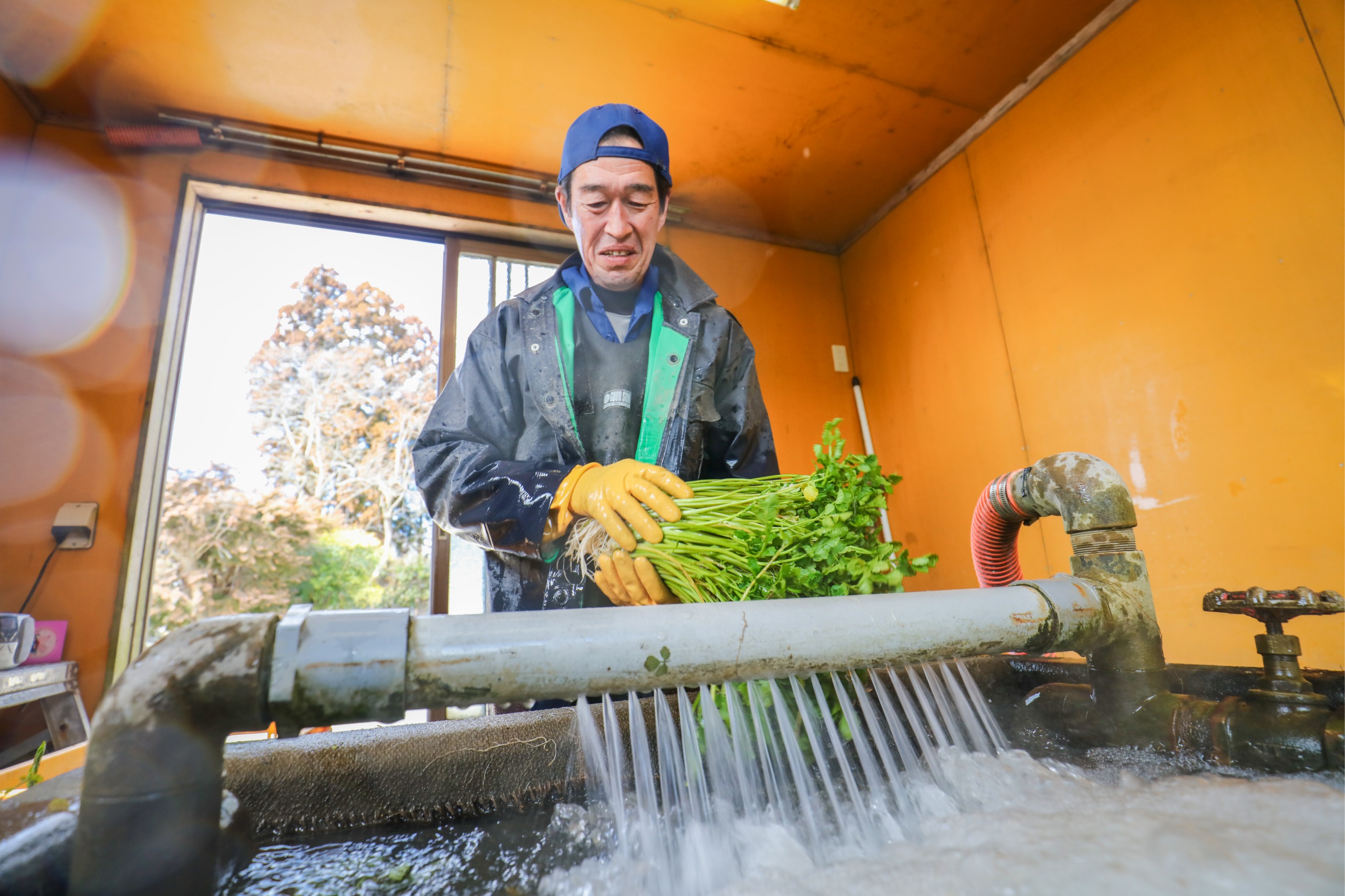
The second process is to clean it; the Seri has to be got rid of mud and dirt before the sorting process.
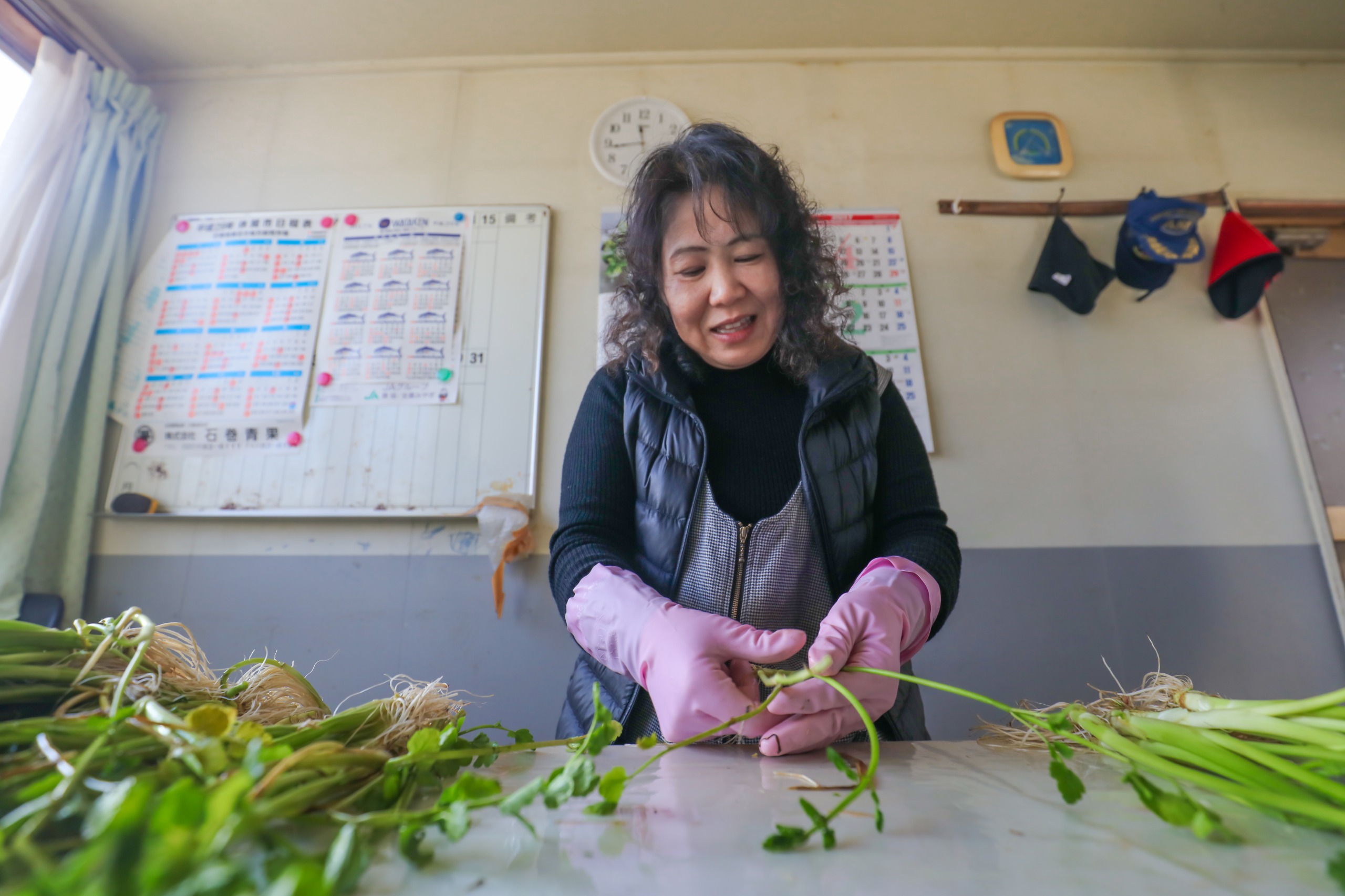
The third process is to sort the “good-looking-ones” out: more than half of the cleaned Seri has to be thrown away – it has to be good looking to cater the market need. Mr. Takahashi’s wife taught me how to choose the best ones.
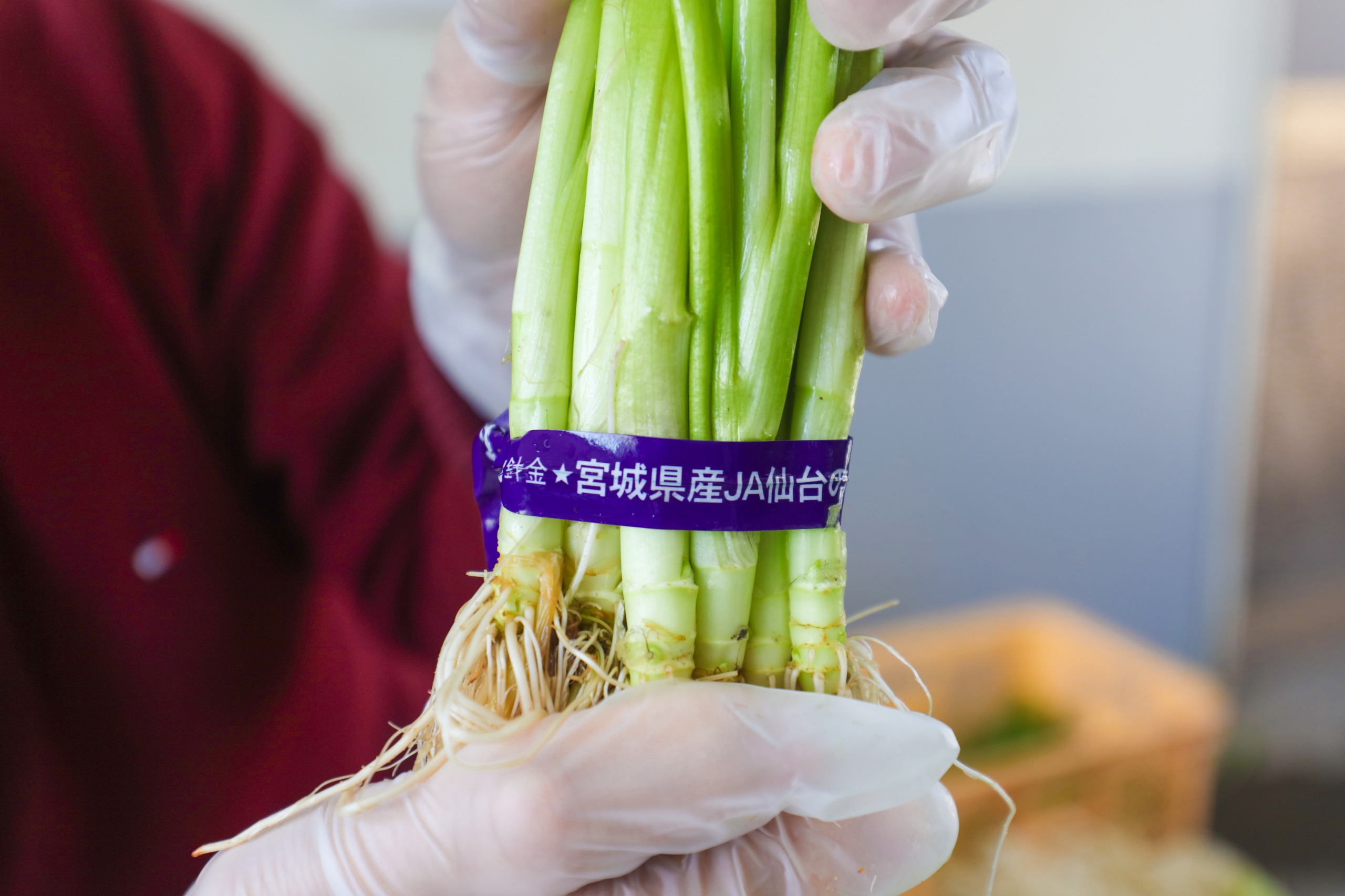
The “chosen ones” were bond into 100g bundles each, and that’s how Seri were processed before sale.
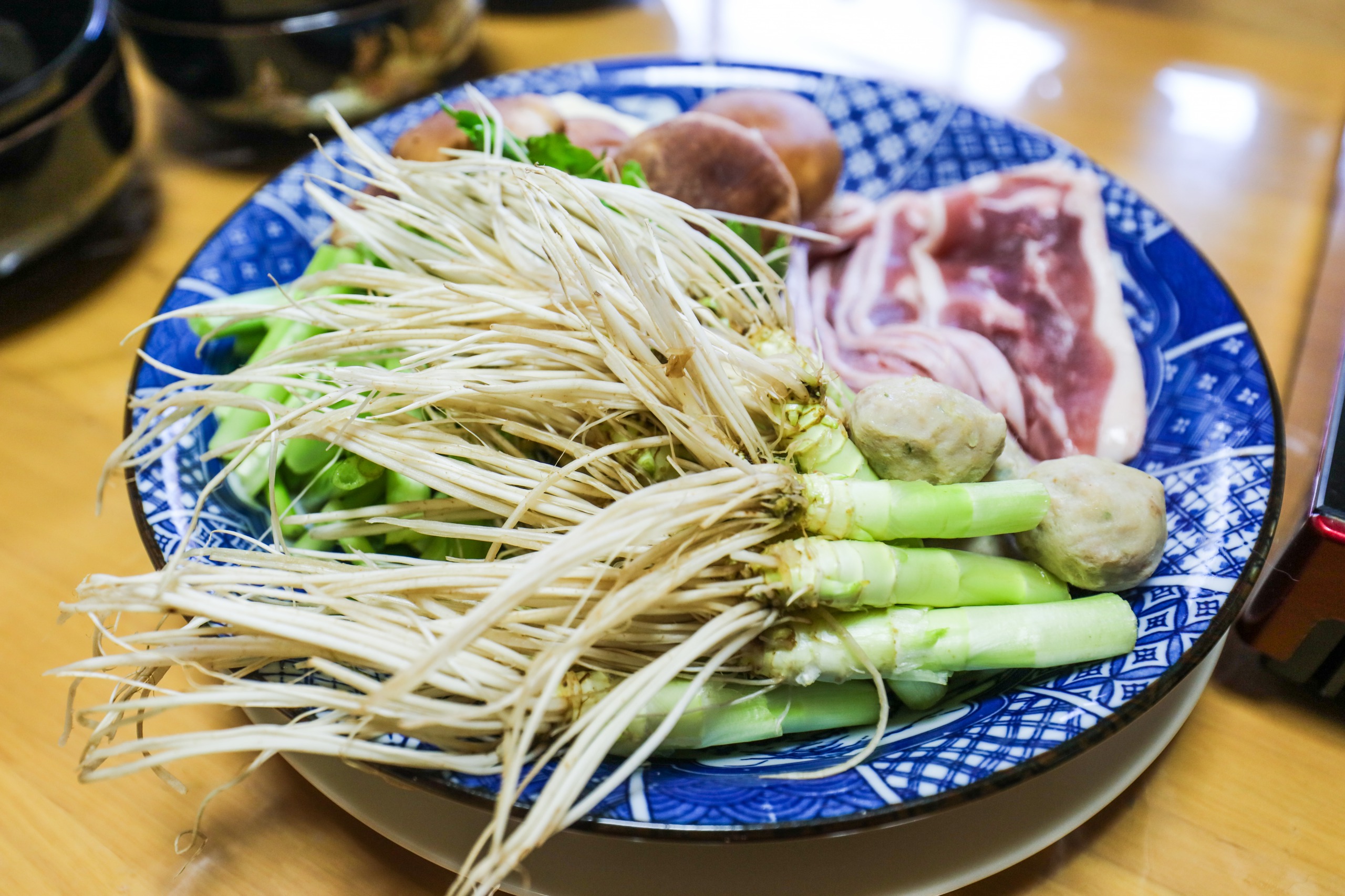
Every part of Seri is delicious, including its root. The root of the Seri has a special faint scent close to the Chinese Houttuynia Cordata.
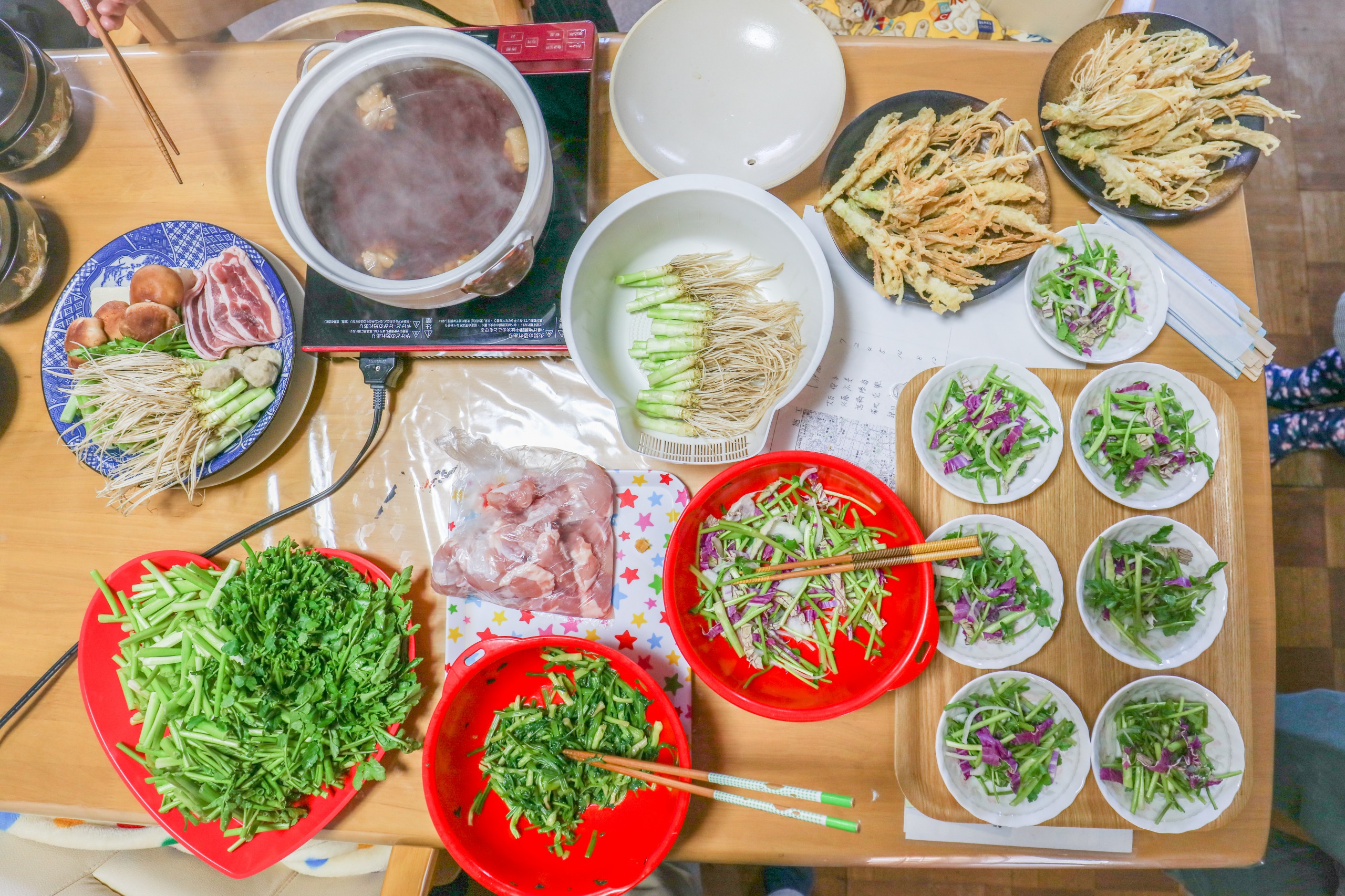
Seri can also be made into Tempura and Salad.
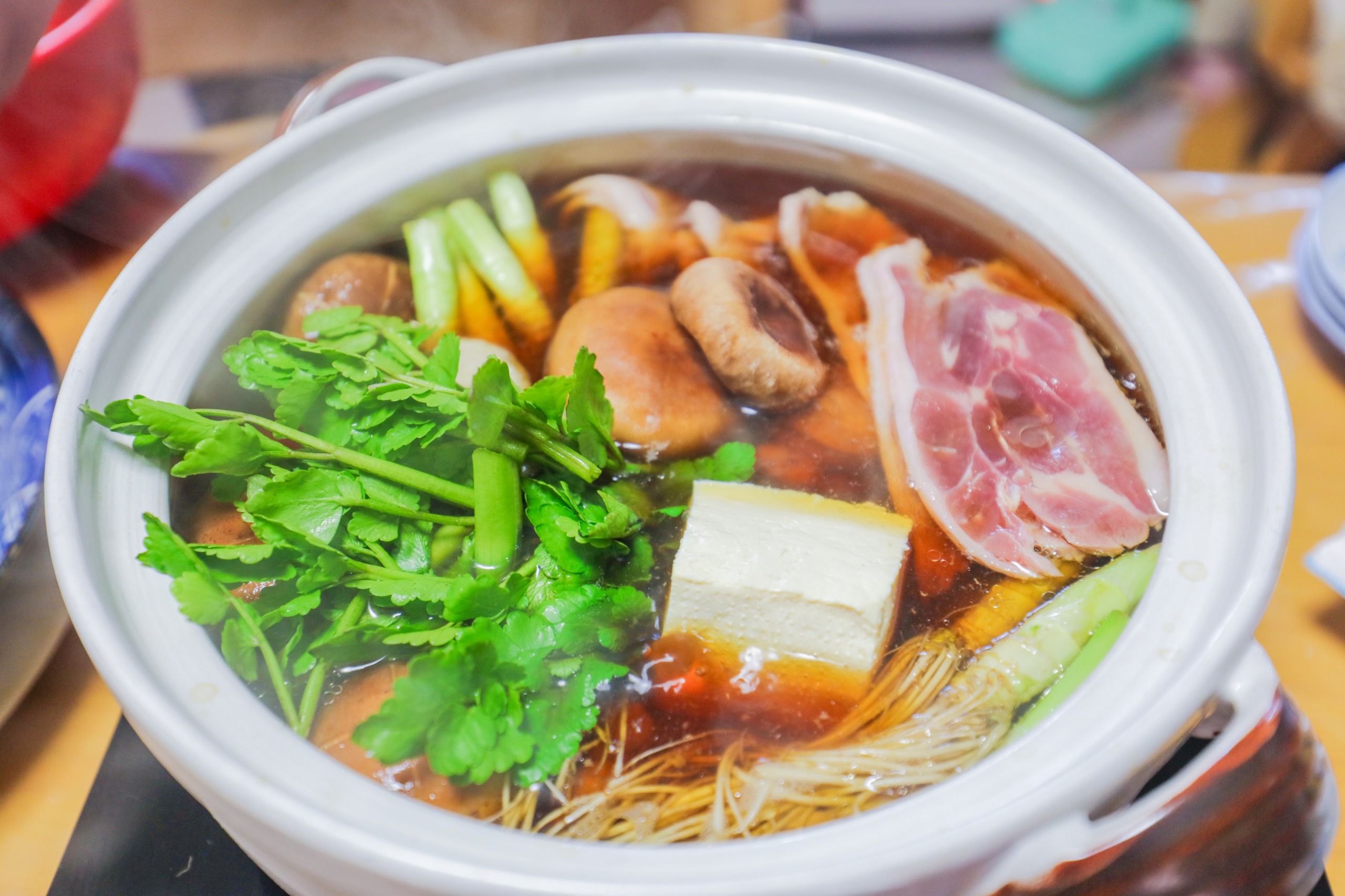
And Beef Hot Pot as well.

I enjoyed Seri a lot at Takahashi’s Farm.
ささ圭 – A Second Visit at the Factory
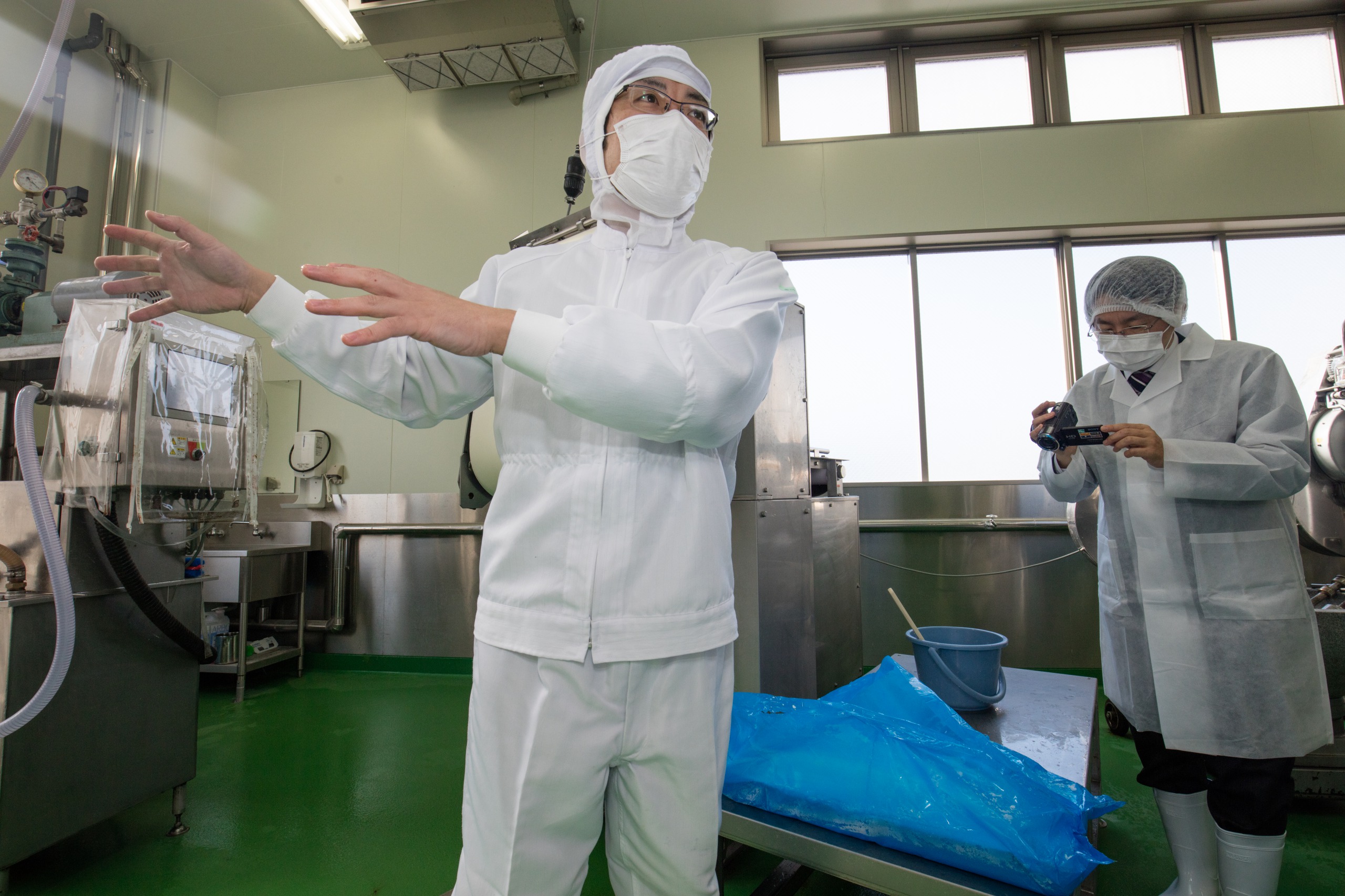
Yesterday I went to the Sasakei (ささ圭) Shop and tasted their products. And today I paid a visit to their factory for the secret behind this wonderful product.
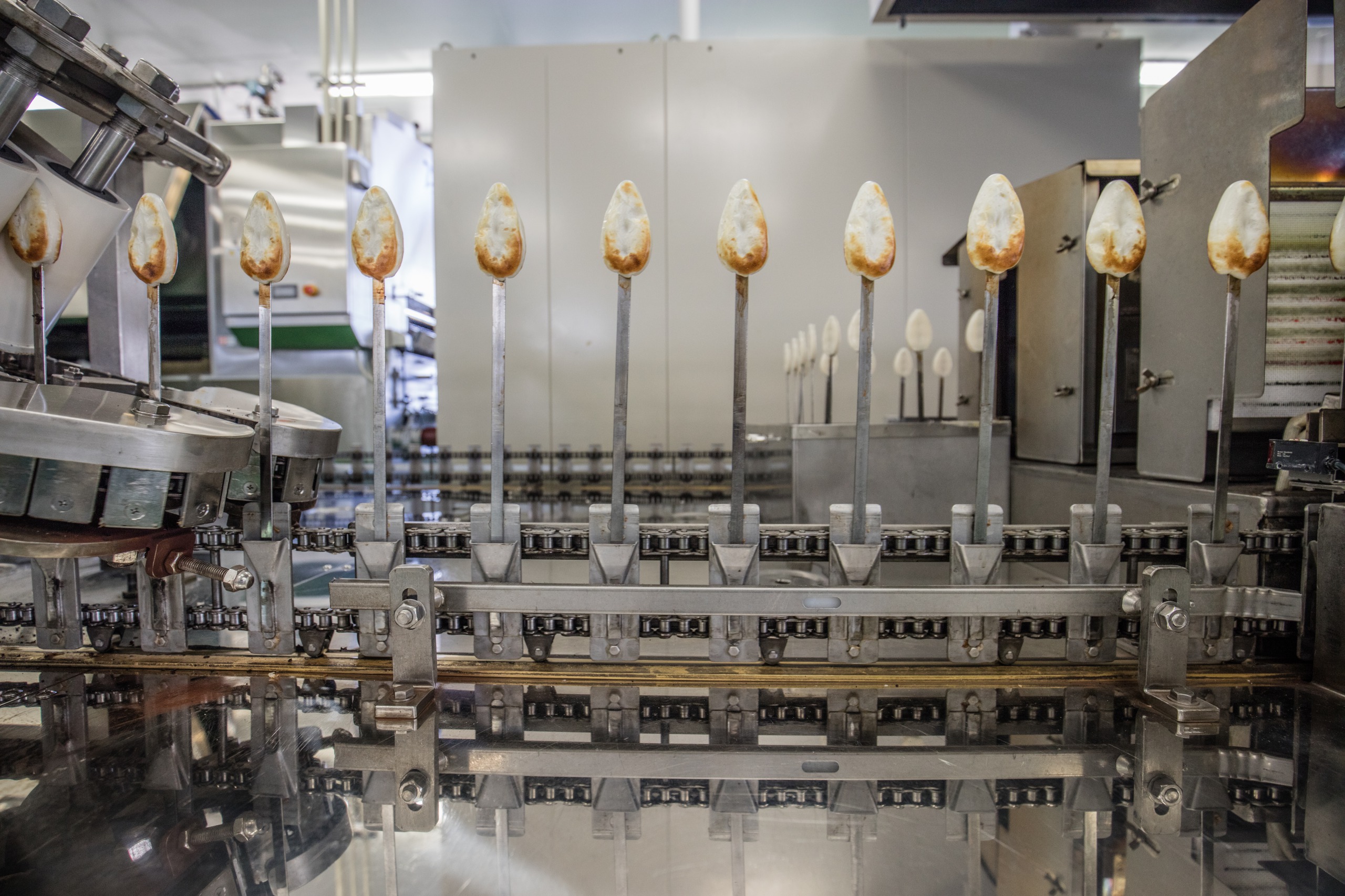
Being the leading enterprise in Sasakama manufacturing, the several Sasakei factories were destroyed in the tsunami. The reputation and prestige of their product helped Sasakei stood up again.
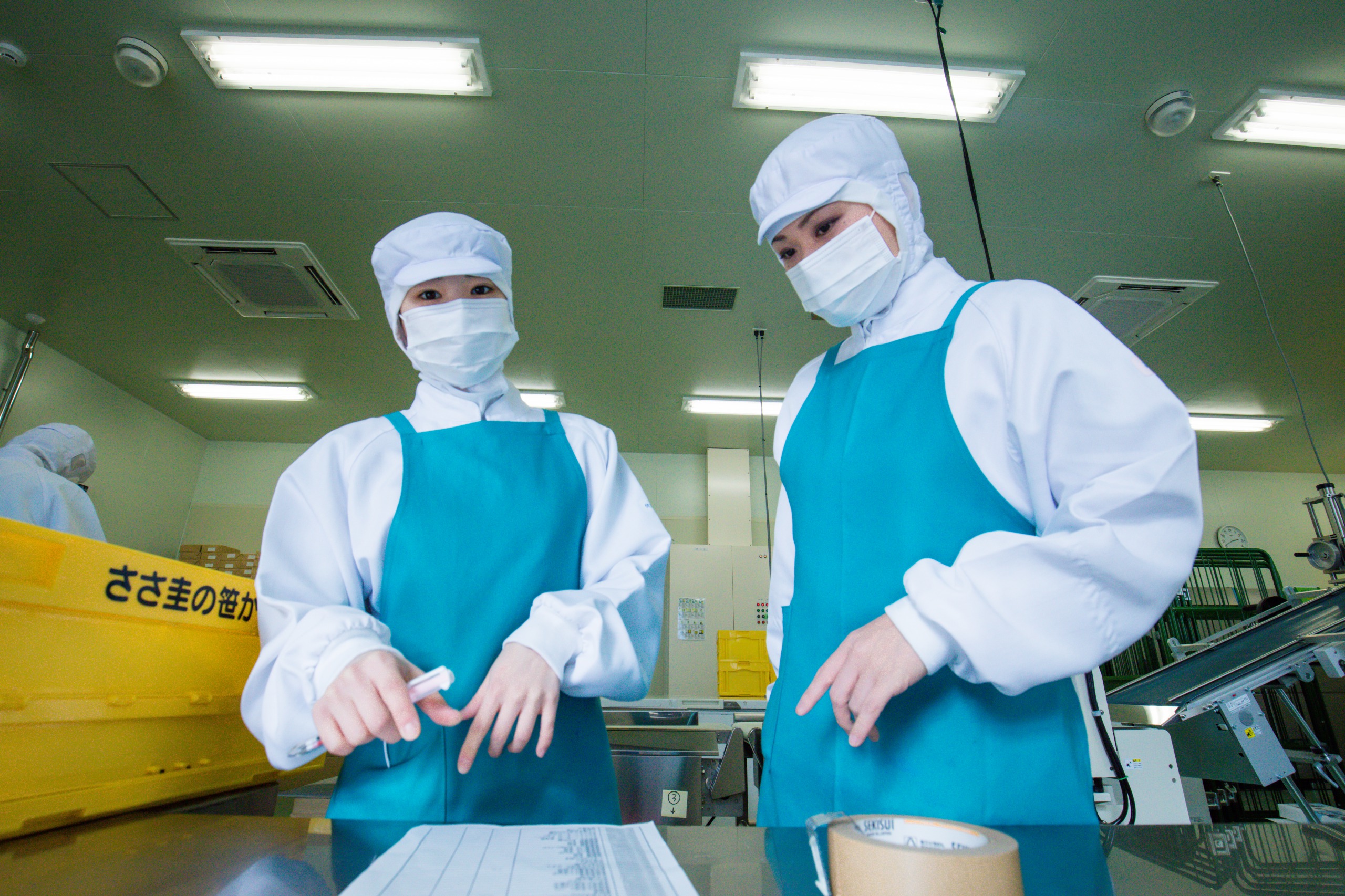
The thing that stroke me most in their factory was the hygienic standard of the Sasake Factory; you have to triple clean yourself before entering any manufacturing shop.
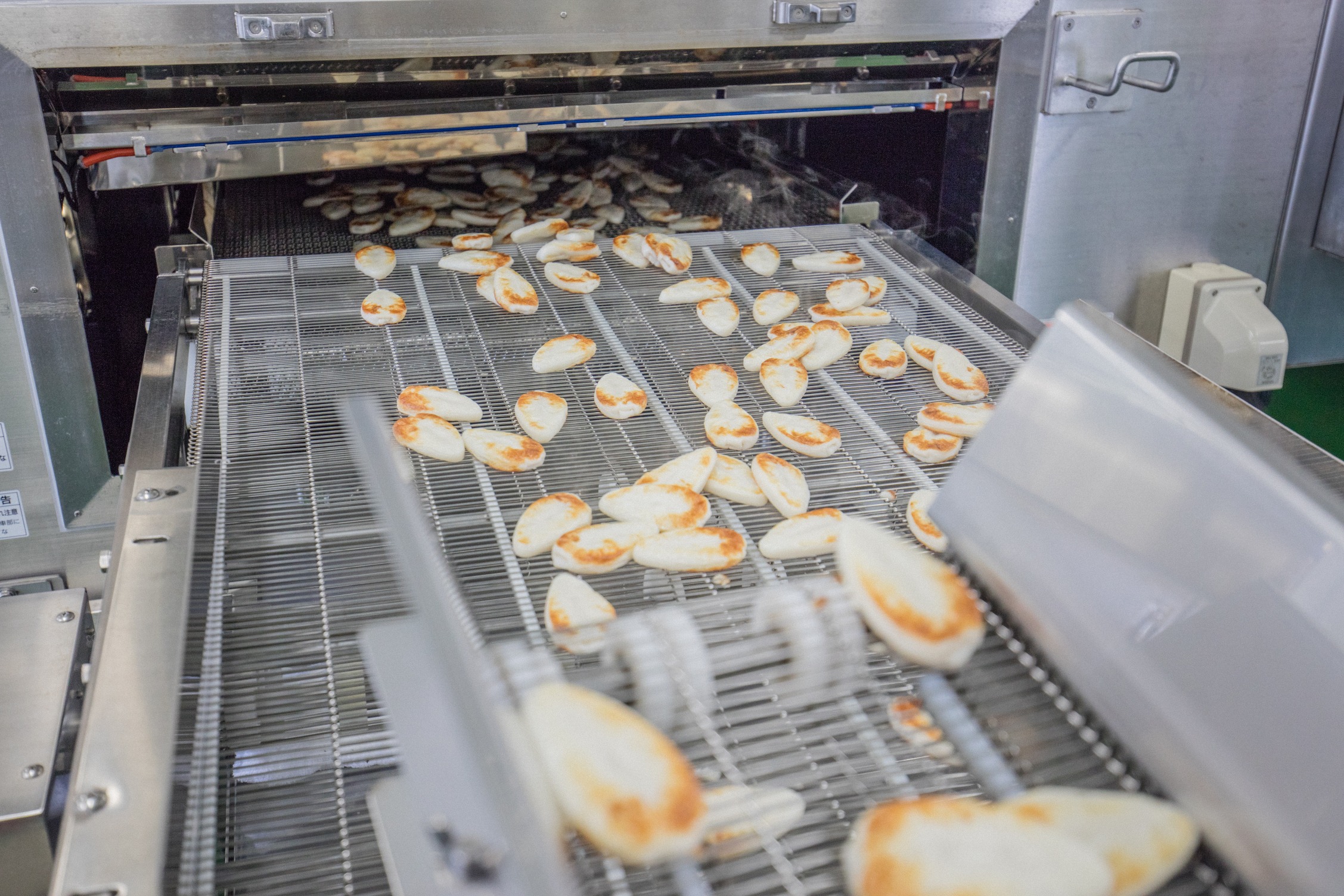
The Sasakama was manufactured after so many complicated process to ensure its great taste and mouthfeel.
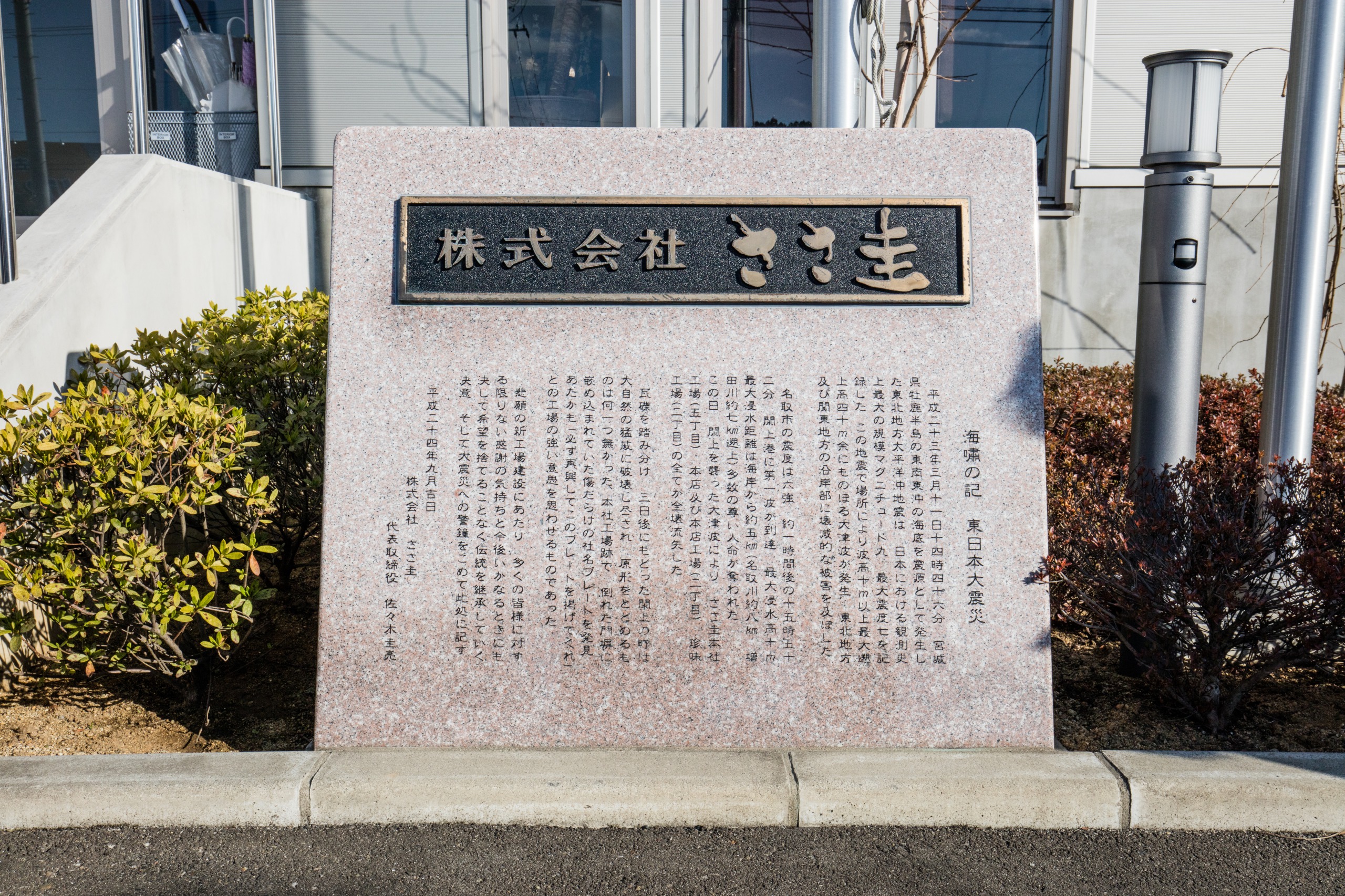
The Sasake was the representative of the Tohoku spirit after the tsunami, this stone tablet was retreated after the tsunami, recording the glorious history of how Sasake revived itself after the tragedy in 2011. The address of ささ圭 factory is as below.
熊野神社- Astonishing Architecture in Sunset
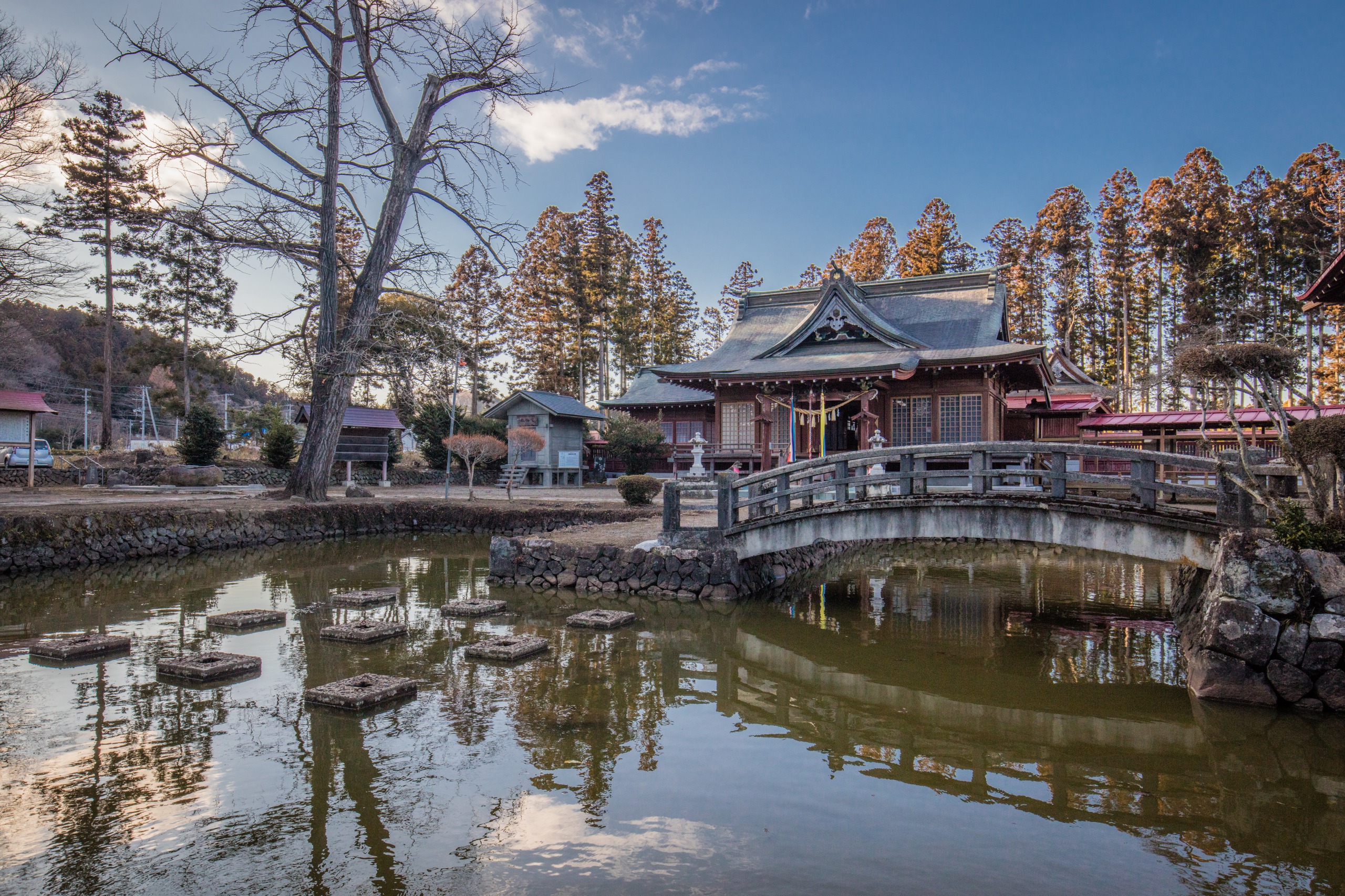
Although with a Hanzi of “bear” in its name, the Kumano Temple has no bear inside.
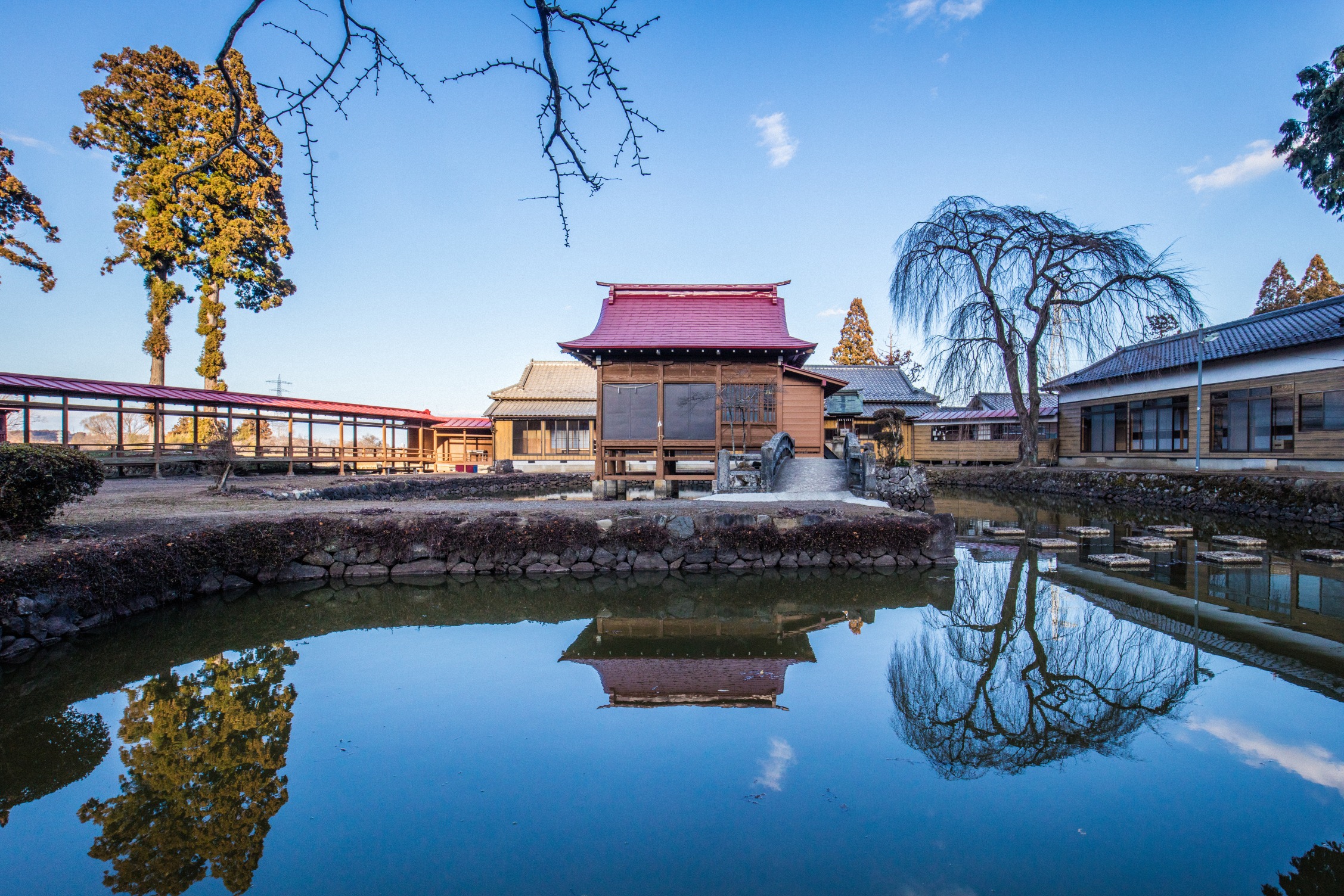
I arrived at the Kumano Temple at the sunset. As there was no people in the temple at this time, the temple had a poetic imagery and its beauty was astonishing.
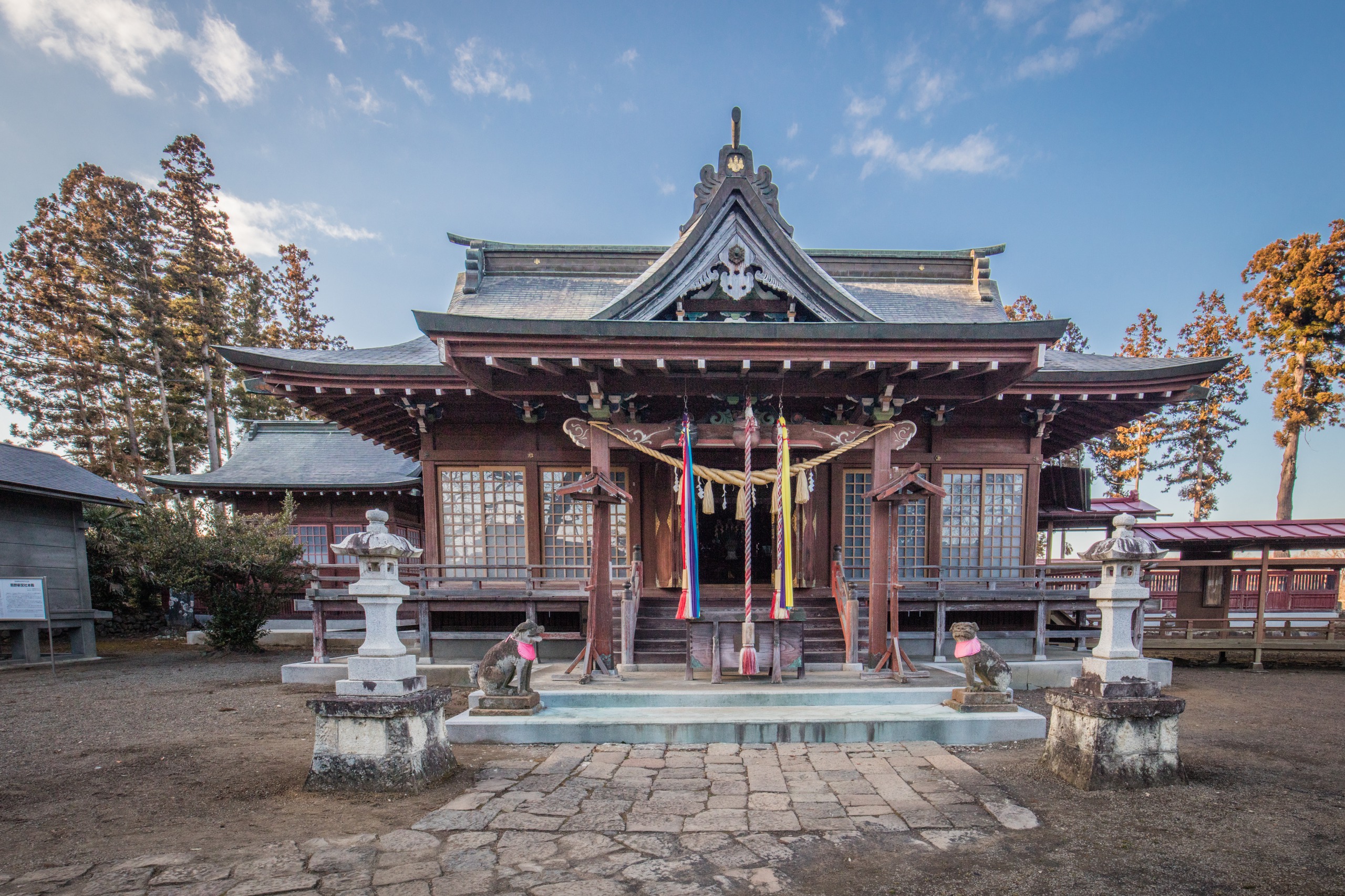
The address of 熊野神社 was as follows.

